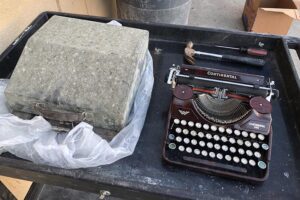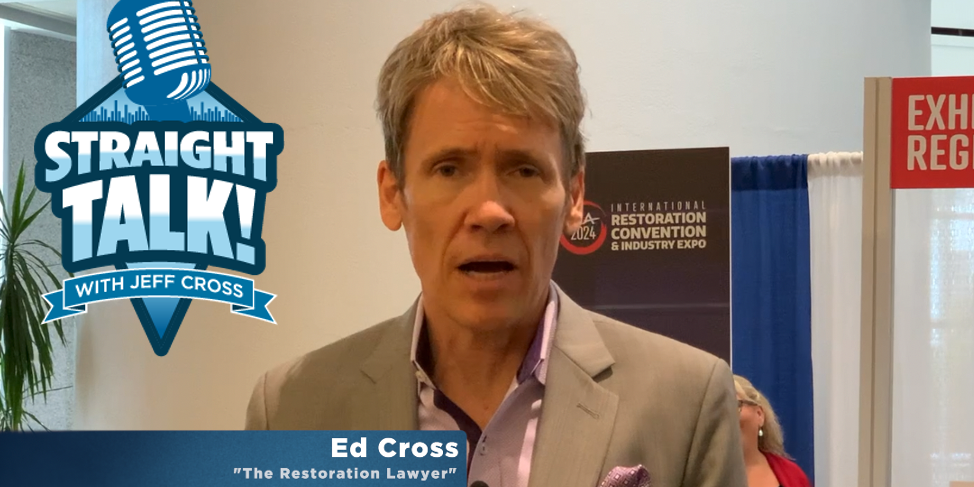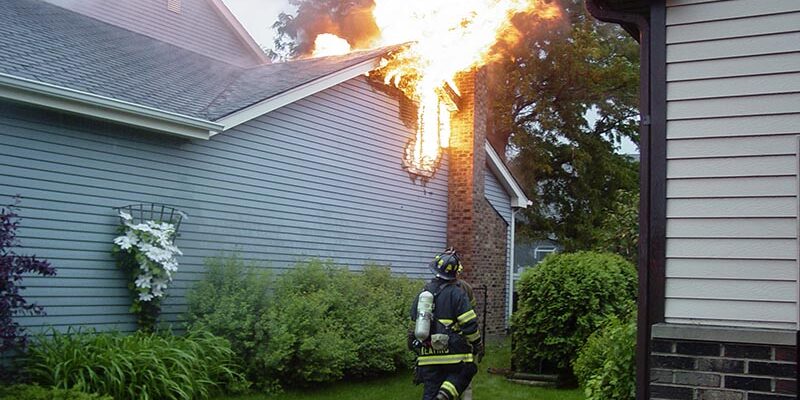The Unappreciated Aspect of Remediation

By Lori Young, CLS, and Michael Pinto, CMP
What do you get when a professed contents cleaning geek and a known mold geek collaborate on an article for Cleanfax magazine? Hopefully, a piece that is informative, interesting, and fun to read. It sounds like a tall order until you realize the respect and appreciation that each of the authors has for their co-writer.
The basics of mold remediation
When fungal contamination plagues a structure, it must be dealt with. The majority of the guidance documents instruct individuals to:
- Remove the source material.
- Clean the isolated work areas where the mold was removed.
- Make sure the fungal spores have not compromised the HVAC system.
- Assess/clean the contents.
- Clean residual contamination (known in the industry as Condition 2) from the structure.
Most inspectors and contractors focus on the first item. Some will also include a review and remediation of the HVAC system. Sadly, in the remediation industry, content and whole house cleaning are often the elephant in the room. While we hope to come back and provide information in a future article about whole house cleaning, this piece focuses on contents cleaning.
The risk of ignoring contents cleaning

While most contents are of the modern variety, you will have antiques and other valuables to restore.
One of the reasons that contents “get so little love” regarding remediation is that many inspectors do not know how to properly evaluate them for contamination, and many contractors are not set up to deal with them efficiently or effectively. This is no surprise, as many mold remediation contractors originally started as restoration contractors. In that industry, content cleaning for smoke and water damage has evolved into a specialized sub-section of the restoration field. That transition is just starting to take place in the mold remediation arena.
The impetus for, and value of, contents being cleaned for mold by a specialist has grown over the last five years. This change has been fueled by a much deeper understanding of the health risks mold-sensitized individuals face. Significant symptoms can be triggered by what would seem to be trivial exposures to most people.

A skilled technician can work magic with contents restoration.
The push to evaluate and clean contents properly has also been encouraged by the growing awareness of mycotoxins, poisons produced by mold, and their prevalence in water-damaged structures. Forward strides have matched this medical and scientific information about contents in both testing and cleaning methods. Indeed, the restoration industry now has an earned the designation of Contents Loss Specialist (CLS) to accompany the Certified Mold Professional (CMP) industry recognition.
As more and more clients understand the risk of mold exposure, the more research they are doing. Many internet information sources (such as Change the Air Foundation at changetheairfoundation.org) are quite good and lead individuals to understand that each of the five parts of the puzzle detailed in this article must be addressed in a comprehensive mold remediation project.
The contractor who ignores the possibility of contaminated contents, either because they haven’t addressed them in the past or because they don’t have the proper skills in-house or a subcontractor lined up, will quickly find themselves at a disadvantage. Worse yet, they will risk dealing with multiple callbacks and unfavorable reviews when limited remediation does not resolve the health issues of sensitized occupants.
The challenge of properly cleaning mold from contents
Over the past several years, Lori Young has developed a passion for helping people with substantial exposure to mold in their homes. Many of these individuals were ill or have illnesses that have been exacerbated by mold and/or mycotoxin exposure. Many of her clients went so far as to have testing that proved that they had mycotoxins in their bloodstream.
One key consideration in many of those cases was the fact that a mold remediation project had been completed that focused on removing visible growth. Even if the remediation was done well, the work did not address the residual contamination on the surface and contents. As Young learned more about mold (different types, different exposures, etc.), she became fascinated with answering the question of which contents could be safely cleaned so that they could be kept, even by sensitized individuals.
Working with Wonder Makers Environmental for testing and data, Young was able to intentionally build a base of information about the effectiveness of various content cleaning practices. The data has provided critical insight, allowing her to consult intelligently with individuals affected by highly allergenic and, in some cases, highly toxic, living environments. From books, photos, artwork, children’s toys, textiles, and furnishings, Young evaluated various cleaning approaches and did the testing to understand and have documentation about what could be saved.

Some items you will handle are more sentimental in nature, but valuable to the client. Keep up-to-date on modern contents restoration technology.
Unique challenges with upholstered furniture
With the high replacement cost and all the questions about proper cleaning approaches, one of the areas of particular interest for Young was upholstered furniture.
Using the previously published evaluation criteria for tape lift samples used by Wonder Makers, Young explains to her clients that the sample results fall into categories from 1–5. In that data interpretation system, Categories 1 and 2 are “no spores detected” or “normal fungal ecology.” These two classes of results are acceptable for individuals with a normal immune system. In contrast, Categories 3–5 indicate potential problems. One of the unique aspects of the Wonder Makers’ evaluation criteria is that even one spore of Stachybotrys or Chaetomium will result in a classification of the sample data as Category 5.
Over many years, Young discovered that Category 5s, with proper cleaning and treatment, can become Category 2s. This has been proven on books and other random porous items that cannot be cleaned utilizing a water source. However, a foam cushion and/or pillow covered by an outer fabric of the upholstered item poses a true difficulty for thorough cleaning. Specifically, she was trying to determine if the upholstered fabric is contaminated with mold spores from airborne deposition, specifically reaching Category 5. Do the mold spores migrate down into the pillowing?
The combination of fabric and stuffing is the issue
This is a critical question as, in most cases, such deep contamination is almost impossible to clean or treat thoroughly. In such situations, even if the fabric can be brought down to a Category 2, the pillowing below runs the high risk of re-contaminating the entire piece. This results from the air movement through the various layers of the upholstered furniture as people sit on it, compress the cushions, etc.
In one representative example, testing was done on a chair before cleaning. The tape sample results came back as a 5. Testing of the same chair after thorough cleaning using a HEPA vacuum and hot water extraction yielded a result of Category 2. Unfortunately, when the foam/pillowing below the upholstery was accessed (i.e., cut open) and tested, the results came back as Category 4, which indicates fungal contamination through deposition.
This test and several others strongly suggest that a mold-sensitized individual should not keep an upholstered piece that starts as a 4 or 5, regardless of how clean one can get the exterior fabric. In contrast, if the upholstered piece starts as Category 1, 2, or 3, and the individual is willing to clean the item properly, then there is most likely an option to save it. Even with low initial testing results for upholstered pieces, Young is adamant that such furniture is not an option for a sensitized individual to keep unless cleaned.
Expanding the lessons from upholstery
Clothing, shoes, books, toys, textiles, artwork, exercise equipment, electronics, craft supplies, photo albums, and many more specific types of items make up the specific category of “contents.” This variety of objects must also be matched with an understanding of the client’s individual exposure and specific sensitivities to make good decisions about cleaning techniques and effectiveness.
While it might seem that the results from Young’s work would mean that all stuffed items contaminated with spores must be replaced instead of cleaned, that is not the case. The unique aspect of furniture is that it cannot be treated using a laundry process. Pillows, quilts, sleeping bags, winter jackets, and even detachable furniture cushions can be cleaned in a wash system to remove mold spores.
The Esporta Wash System organization conducted third-party, controlled testing, where intentionally contaminated contents were cut apart to measure inside and outside cleaning effectiveness. The results were amazingly impressive for mold and a variety of other contaminants.
There is a way to clean and test for mold contamination
It remains a mystery why contents cleaning in many mold remediation situations get ignored. Perhaps it is because removing the source of fungal growth in a building generally leads to a dramatic improvement in mold spore levels and air quality. However, in cases where there are mold-sensitized occupants, content cleaning can be critical. As such, it is good to know that contents and mold geeks have combined their efforts to research what is practical and what is not when cleaning mold from contents.
Lori Young is a Certified Restorer, Contents Loss Specialist, Environmental Risk Specialist, and Certified Home Mold Inspector. Still, content cleaning is her real passion, helping real people keep sentimental and valuable items. As the president of Bartwood Construction in Irvine, California, she is dedicated to excellence in fire, water, and mold restoration. She can be reached at [email protected], or visit her website at themoldcleaner.com.
Michael Pinto is the CEO of Wonder Makers Environmental and has expertise in asbestos control, general safety and health, indoor air quality, and lead contamination, in addition to the dangers of mold. He has six different professional certifications to match his academic achievements. He has developed and taught classes to thousands of students, written two textbooks and multiple manuals, and authored more than 260 published articles. He can be reached at [email protected].












